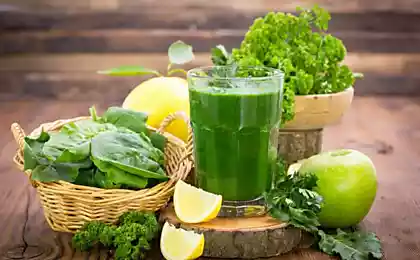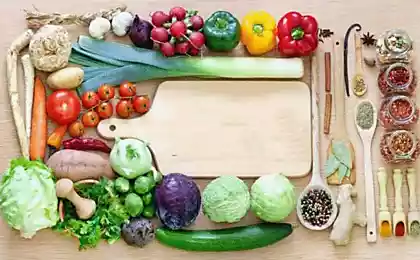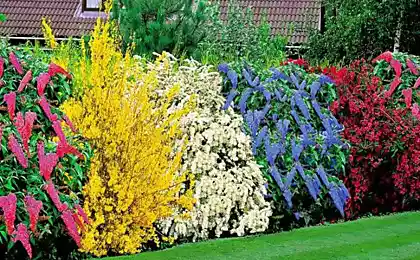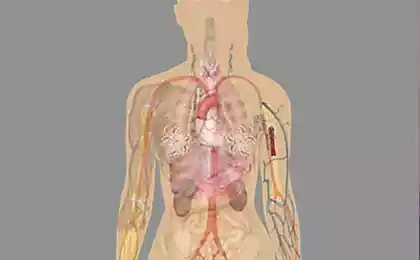467
Live food — the joy of natural flavors without the toxins
With the development of new trends of healthy eating in our life includes such concepts as "organic", "natural food", "natural water", "natural food", "clean energy", "eco", "bio", etc. Let us leave the meaning and validity of these terms on the conscience of manufacturers and advertisers using them, and will deal with the expression "living" in relation to food and cooking. Because the term is worthy.
Despite some, but a clear provocation, it is in the sphere of public power is now often referred to as food cooked according to the principles of raw cooking: "live menu", "restaurant live kitchen", "living sweets" etc.
While all of our "animals" fled in different directions (according to the whims of the marketing and in favor of the sales), try to isolate and fix the particularities of this area, the initial idea intended to bring the joy of natural flavors free of toxins and chemicals, and also serve as a source of health and creative energy:

1. Seasonality.
Most energy in fresh, seasonal vegetables, fruits and herbs (ideally ground). However, such food is not available to all, not always and not for long. Therefore, in practice and in the long run it is wiser to slightly adjust your diet and find creative compromises based on the specific conditions, opportunities of transport logistics, the economy of the country of residence and your own common sense.
2. "Local" products.
By default, the maximum benefit we bear the fruits and plants grown directly in the region of residence (ideally — with their hands). They, as it aligned with the needs of several living people. Because, for example, local apples and pumpkins to residents Rosieposie the Thai mango (in Thailand, the situation is reverse, assuming you are there at least two weeks – it is believed that this is the minimum period for climate adaptation).
3. "Good" cook.
Begin cooking need to be sure in a good mood and with pure thoughts. If the dish is preparing the "evil" chef, through his hands food filled heavy, indigestible energy that may bring you any good, but somewhat roundabout way.
In addition to the spiritual and emotional purity is important and the appearance of the chef, his neatness, punctuality, self-discipline (in terms of "here-now-what"). In many cultures, moral communities, religious ashrams it is for this reason cooking most often with the very distinguished and informed person.

4. Freshness.
The more direct and shortest route was the product from the place of growth to your plate, the more it benefits, vitamins and vitality. High temperature processing, preservation, chemical additives, long-term storage – all this inevitably and to varying degrees affects the energy quality of your food.
5. Creative.
To prepare (or choose) better than those meals that are most like or wishes now. "Live kitchen" is basically a field of experimentation and spontaneous creativity.
Moreover, even if the food was prepared not you personally, but, for example, have come ready to visit or a restaurant, your personal creativity is evident in the selection and combination of dishes, drinks, use of spices, additives and sauces. The most advanced in this respect, institutions are sure to leave guests the opportunity for these impromptu.

6. The conditions and the atmosphere.
Cooking – in a sense, the theatrical performance. Where they play their roles and "decorations" (ergonomic space, osvesheniya, useful tools, favorite fit, reliable equipment), and atmosphere (love, kindness, joy, creativity), and order (comfort, cleanliness and "everything in its place").
Moreover, in the process of cooking and eating there is an active exchange of information, energy: at this point, a person is most open to the perception of others ' feelings, and hence more vulnerable. It is therefore important selective approach to the company's companions and not to start a heated debate, and even more abuse around food.
7. Furnished.
The impression from the table is formed by all practical senses (sight, taste, touch, smell, hearing...) and consists of many nuances, details and trivia: elements of interior and serving, the quality of porcelain, transparency of glasses, the sight and smell of flowers, flickering candles, colors and texture finishes, comfortable furniture, bright lighting, room temperature, music selection, etc., etc.
8. A sense of proportion.
Everything about the combination and choice of products as well as seasonings, spices, sauces and generally in harmony with other dishes in addition to culinary flair, talent and practice – and even the region, so-called food intuition. Which, in turn, is very individual and ... sammentu.
Ie what suits us, it is only now and in this quantity, we only know for certain! To develop this personal quality helps "live" style of food, the most natural (close to Nature), naturally intuitive, and perfect each unique and unrepeatable Moment. published
Also interesting: School lunch in Japan is not just about the food!
The effect of plants on the chakras — balance the mind, body and spirit
P. S. And remember, only by changing their consumption — together we change the world! ©
Source: rawstyle.ru/2015/02/21/chto-takoe-zhivaya-eda/#more-13523
Despite some, but a clear provocation, it is in the sphere of public power is now often referred to as food cooked according to the principles of raw cooking: "live menu", "restaurant live kitchen", "living sweets" etc.
While all of our "animals" fled in different directions (according to the whims of the marketing and in favor of the sales), try to isolate and fix the particularities of this area, the initial idea intended to bring the joy of natural flavors free of toxins and chemicals, and also serve as a source of health and creative energy:

1. Seasonality.
Most energy in fresh, seasonal vegetables, fruits and herbs (ideally ground). However, such food is not available to all, not always and not for long. Therefore, in practice and in the long run it is wiser to slightly adjust your diet and find creative compromises based on the specific conditions, opportunities of transport logistics, the economy of the country of residence and your own common sense.
2. "Local" products.
By default, the maximum benefit we bear the fruits and plants grown directly in the region of residence (ideally — with their hands). They, as it aligned with the needs of several living people. Because, for example, local apples and pumpkins to residents Rosieposie the Thai mango (in Thailand, the situation is reverse, assuming you are there at least two weeks – it is believed that this is the minimum period for climate adaptation).
3. "Good" cook.
Begin cooking need to be sure in a good mood and with pure thoughts. If the dish is preparing the "evil" chef, through his hands food filled heavy, indigestible energy that may bring you any good, but somewhat roundabout way.
In addition to the spiritual and emotional purity is important and the appearance of the chef, his neatness, punctuality, self-discipline (in terms of "here-now-what"). In many cultures, moral communities, religious ashrams it is for this reason cooking most often with the very distinguished and informed person.

4. Freshness.
The more direct and shortest route was the product from the place of growth to your plate, the more it benefits, vitamins and vitality. High temperature processing, preservation, chemical additives, long-term storage – all this inevitably and to varying degrees affects the energy quality of your food.
5. Creative.
To prepare (or choose) better than those meals that are most like or wishes now. "Live kitchen" is basically a field of experimentation and spontaneous creativity.
Moreover, even if the food was prepared not you personally, but, for example, have come ready to visit or a restaurant, your personal creativity is evident in the selection and combination of dishes, drinks, use of spices, additives and sauces. The most advanced in this respect, institutions are sure to leave guests the opportunity for these impromptu.

6. The conditions and the atmosphere.
Cooking – in a sense, the theatrical performance. Where they play their roles and "decorations" (ergonomic space, osvesheniya, useful tools, favorite fit, reliable equipment), and atmosphere (love, kindness, joy, creativity), and order (comfort, cleanliness and "everything in its place").
Moreover, in the process of cooking and eating there is an active exchange of information, energy: at this point, a person is most open to the perception of others ' feelings, and hence more vulnerable. It is therefore important selective approach to the company's companions and not to start a heated debate, and even more abuse around food.
7. Furnished.
The impression from the table is formed by all practical senses (sight, taste, touch, smell, hearing...) and consists of many nuances, details and trivia: elements of interior and serving, the quality of porcelain, transparency of glasses, the sight and smell of flowers, flickering candles, colors and texture finishes, comfortable furniture, bright lighting, room temperature, music selection, etc., etc.
8. A sense of proportion.
Everything about the combination and choice of products as well as seasonings, spices, sauces and generally in harmony with other dishes in addition to culinary flair, talent and practice – and even the region, so-called food intuition. Which, in turn, is very individual and ... sammentu.
Ie what suits us, it is only now and in this quantity, we only know for certain! To develop this personal quality helps "live" style of food, the most natural (close to Nature), naturally intuitive, and perfect each unique and unrepeatable Moment. published
Also interesting: School lunch in Japan is not just about the food!
The effect of plants on the chakras — balance the mind, body and spirit
P. S. And remember, only by changing their consumption — together we change the world! ©
Source: rawstyle.ru/2015/02/21/chto-takoe-zhivaya-eda/#more-13523
MERCEDES-BENZ will launch a series of hydrogen crossover
Panasonic and BAIC will launch in China plant to produce parts for electric vehicles























